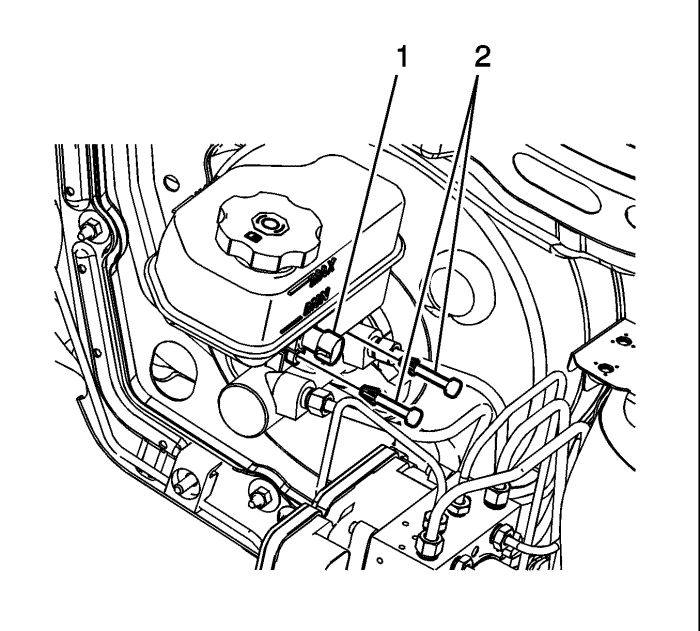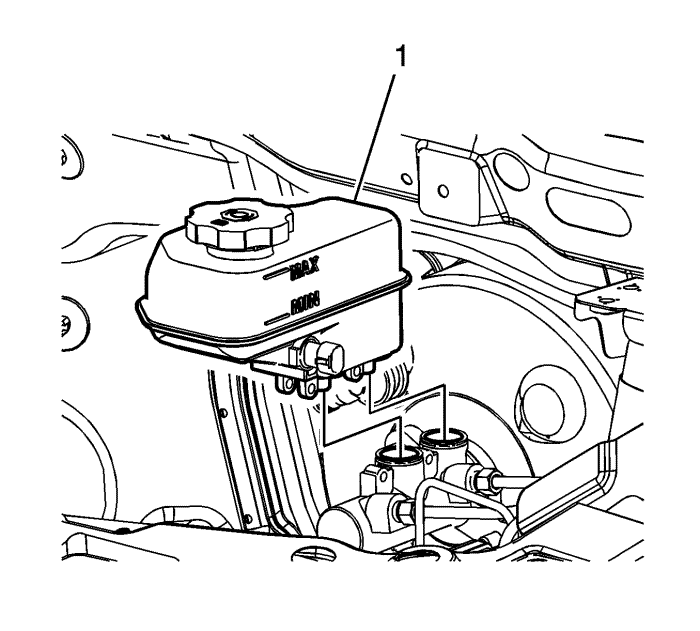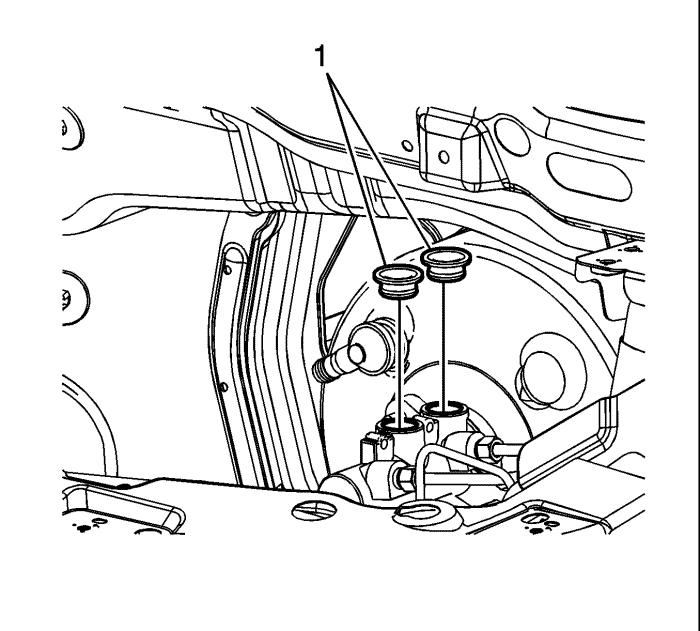Master Cylinder Reservoir Replacement — LHD
Removal Procedure
Warning: Refer to Brake Fluid Irritant Warning in the Preface section.
Caution: Refer to Brake Fluid Effects on Paint and Electrical Components Caution in the Preface section.
- Using a suitable tool, remove the brake fluid from the brake master cylinder reservoir.
- Discard the brake fluid into an approved container.
- Remove the underhood electrical center. Refer to Underhood Electrical Center or Junction Block Replacement .
- Without draining the coolant or removing the hoses, remove and position aside the radiator surge tank. Refer to
Radiator Surge Tank Replacement : Diesel → Petrol Engines .

- Disconnect the master cylinder fluid level sensor electrical connector (1).
Note: Do not reuse the master cylinder reservoir retaining pins.
- Remove the master cylinder reservoir retaining pins (2) by compressing the locking tabs.
- Discard the retaining pins.

- Carefully remove the master cylinder reservoir (1) by pulling the reservoir straight up.

- Remove the master cylinder reservoir seals (1).
Installation Procedure

- Lightly lubricate the master cylinder reservoir seals with GM approved brake fluid from a clean, sealed brake fluid container.
- Install the master cylinder reservoir seals (1).

- Install the master cylinder reservoir (1) to the master cylinder.
- Ensure the master cylinder reservoir bayonets are fully seated in the master cylinder.

- Connect the master cylinder fluid level sensor electrical connector (1).
- Install new master cylinder reservoir retaining pins (2).
- Ensure the retaining pins are fully seated and the locking tabs are fully deployed.
- Install the radiator surge tank. Refer to
Radiator Surge Tank Replacement : Diesel → Petrol Engines .
- Install the underhood electrical center. Refer to Underhood Electrical Center or Junction Block Replacement .
- Fill the master cylinder reservoir to the proper level. Refer to Master Cylinder Reservoir Filling .
- Observe the brake pedal feel after filling the master cylinder reservoir. If the pedal feels spongy, bleed the hydraulic brake system. Refer to
Hydraulic Brake System Bleeding : Manual → Pressure .
| © Copyright Chevrolet. All rights reserved |





